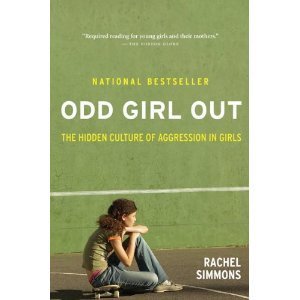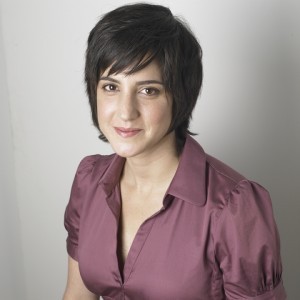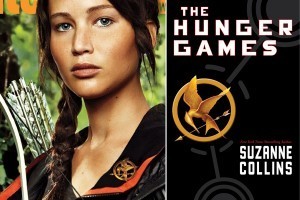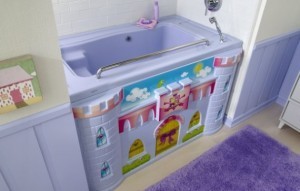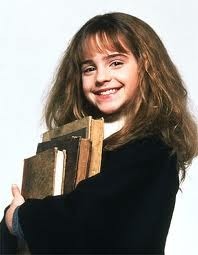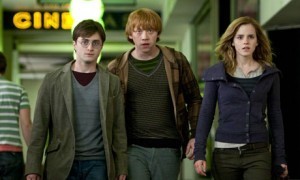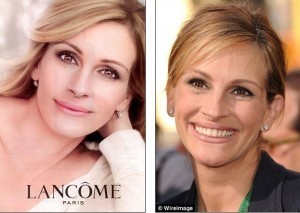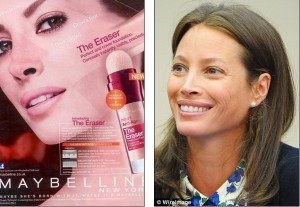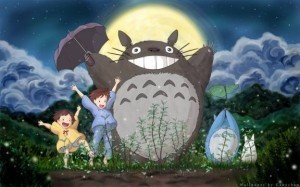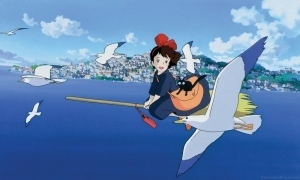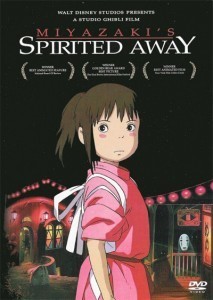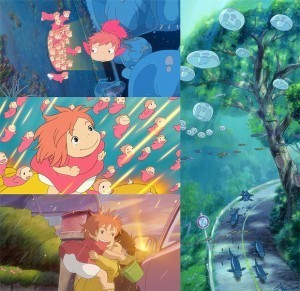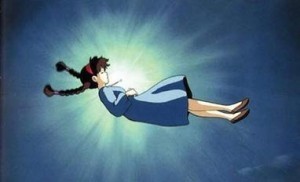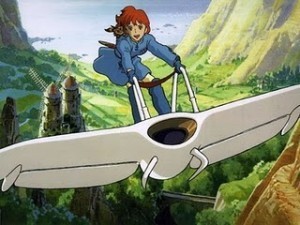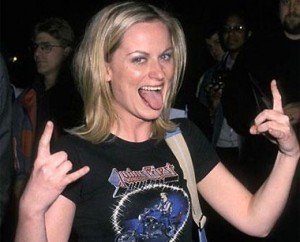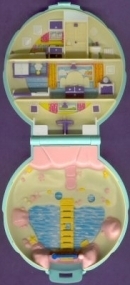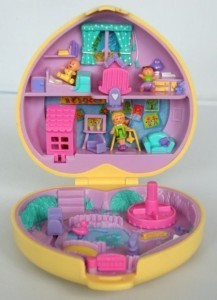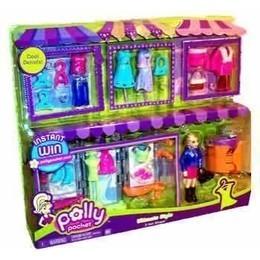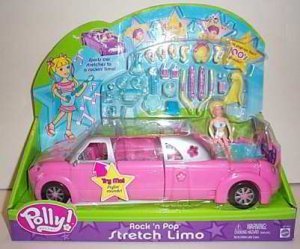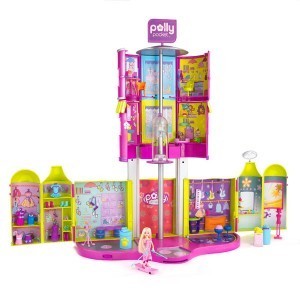Peggy Orenstein's Blog, page 10
August 12, 2011
My Shero–La Rachel Simmons
I love Rachel Simmons. Even though she called me the grandmother of the girls' movement when I was YOUNGER THAN SHE IS NOW (ahem!). Yes she did. And yet, we have grown to be dear friends. I'm forgiving that way.
Anyway, in addition to her writing, speaking, coaching and work with Simone Marean and Ronald at the marvelous Girls Leadership Institute she has just released a revised and updated edition of her germinal (not seminal, get it?) book, "Odd Girl Out." As she writes in the new introduction, 'I wrote [this] as an observer, but I have revised it as a practitioner.
According to Slate XX , Rachel returns to the material "with more perspective":
Simmons's transition has changed her book fundamentally, and for the better. In its original form, Odd Girl Out brought a largely unexamined social problem into the public eye with sensitivity and insight, but offered little by way of solutions or advice. Now it is both a sociological text and a how-to. Simmons has added three new chapters focused on the roles of parents and teachers, which detail the tricks and tips she's picked up over the years. She gets incredibly specific, down to which sentences do and don't work with teens, and how best to approach another parent or teacher about bullying.
The new Odd Girl Out also addresses the changes brought about by technology. Facebook and sexting didn't exist in 2002, but now they dominate the way girls conceptualize and conduct their friendships. Simmons tackles social media's effect on teen girls in two new chapters that cover cyberbullying, privacy, and what parents can do to help their daughters negotiate the slippery world of online interaction. What she describes is frankly horrifying, an inescapable maelstrom of hormones, insecurity, and cruelty enabled by the Internet's tendency to erase inhibitions and accountability. Refreshingly, though, Simmons refuses to see girls as victims of new technology. "Social media may magnify emotions and facilitate cruelty, but it does not 'make' girls act a particular way," she writes. The solution, she suggests, isn't to log off but to develop strategies for communicating healthily, just like in real-time interactions.
Simmons has made plenty of tweaks and improvements to her original work, but here's what remains unchanged: Odd Girl Out is gripping because it's relatable, even to those of us who are mercifully removed from the social politics of middle and high school. By documenting girls' social lives with depth and nuance (no girl is just a bully or just a victim, Simmons reminds us) the book encourages us to consider what transpired at our own lunch tables, and how that shaped the kind of women we became. Everyone knows what it feels like to be the odd girl out, and Simmons has turned her book into a meeting place for all experiences: Girls find a voice and an ally, parents and teachers gain perspective and tools to help the girls in their lives, and the rest of us observe from the sidelines, feeling wiser and a bit better understood.
Also, catch this interview with La Rachel herself on NPR. She is so smart, so relatable and so wise about the world–hey, kind of like my grandma!
Rachel Simmons: Shayne Punim!
Jennifer Lawrence–The Anti-Bella?
The first "Hunger Games" movie is set to hit theaters in March. The next one was just announced as well, set for November 2013. Both will star Jennifer Lawrence as Katniss. She's a little old for the part, true, but I A*D*O*R*E*D* her in Winter's Bone which was one of the best movies I've seen in years (MUST SEE MUST SEE MUST SEE). So I am crossing my fingers that she will be the anti-Bella……
August 10, 2011
A Break in My Break
Quick break to post a photo of this week's most egregious Princess product. Trying to imagine the parents who would drop $2k on this one….
Yes, it's a Princess Bathtub. An ugly one. From the folks at American Standard. Boys can get a fire truck!
Well, the economy should make THIS go away, no?
Thanks to the inimitable Marjorie Ingall who alerted me to this via a post on the blog daddytypes.
Marjorie also pointed me to this great essay in the UK Guardian about how Hermione Granger's bookish, brainy persona was made less threatening and girlie-d up over the course of the Harry Potter movies. It starts out questioning the glaring "I can't" our girl uttered when faced with destroying a horcrux. I do recall sitting in the theater and thinking, "Whaaaaaat??????"As the essayist writes:
Did Hermione Granger really say "I can't" during the climactic battle in the final chapter of the Harry Potter film saga? Presented with her chance to destroy one of the horcruxes she had put her life on the line to hunt, she backs away and needs her almost-boyfriend Ron to insist that of course she can. Sorry, filmmakers, that quavering girly-girl is not Hermione.
She continues:
There's almost a direct correlation with actress Emma Watson's growing prettiness through the course of the films and Hermione's decreased bookishness and pragmatism. Screenwriter Steve Kloves may have liked Hermione best when he was first given the job of adapting the books but as she became an adolescent, something shifted. It's one thing for a girl to be the brains of an operation when everyone is prepubescent. But an adult woman who is brainy and takes charge is "domineering". A very scary witch indeed. Presumably Kloves didn't want any young male filmgoers sneering (or crossing their legs nervously) when Hermione was on screen.
And:
It's also discouraging. Hermione is a great role model who doesn't care if her bookishness or activism (absent in the films) are laughed at. She knows the power of books.
Hermione steadily became blonder and sexier in Deathly Hallows, wearing jeans so tight you'd think her legs would break if she tried to run. When it comes to film, something about a smart, fearless woman who doesn't care about her looks makes Hollywood leery; even if, in this instance, she commands a loyal and loving built-in audience before the film begins.
Why is it so difficult for proudly brainy, bookish, outspoken girls of any age to see themselves on screen, especially in major studio films? Where are the girls who don't make an effort to fit the "feminine" stereotype and are still admired and even loved anyway?
And where will girls learn and be validated in their belief that they don't have to compromise fundamental aspects of their personalities to prosper? That there is never any reason to say "I can't"? Books, for a start.
Thoughts?
July 29, 2011
Pretty Woman or Pretty Tricky?
I'm going to take August off of blogging and (if I can control myself) all electronic media. But before I go I wanted to direct you to someone else's blog–that of the excellent organization About Face, which "…equips women and girls with tools to understand and resist harmful media messages that affect their self-esteem and body image. We do this through our three programs: Education Into Action media-literacy workshops; Take Action, which enables girls and women to develop and execute their own actions; and About-Face.org, our web site."
What's not to love?
In her latest blog post, inspired by the banning in Britain of two adds by L'Oreal for an anti-aging foundation which depicted heavily airbrushed portraits of Julia Roberts and Christy Turlington, Jennifer Berger, the Exec Director of About-Face, discusses how "we — everyday women and girls — can help ourselves out of this body-hatred spiral without totally disconnecting from culture altogether."
Among her suggestions:
"Pass the Healthy Media for Youth Act (H.R. 2513). H.R. 2513 would authorize grants to promote media literacy and youth empowerment programs, to authorize research on the role and impact of depictions of girls and women in the media, to provide for the establishment of a National Task Force on Girls and Women in the Media. Shall we all get behind this legislation? Yes, let's do it!"
"Educate ourselves with some solid media-literacy skills instead of just 'turning off the TV' and closing the magazines, and never using the Web. The media coverage of this issue makes women sound like naive victims who can't think for themselves. So, we need to work hard to make these images less powerful in our own psyches by understanding the insidious nature of photo-retouching and how it affects the way we look at our own, sometimes-bumpy, skin. And we need to reject what we see."
"Person-by-person resistance: Celebrities! Help your sisters out! We need actresses', celebrities', and models' help as our allies. They need to understand that a) we're not against them and b) more women than they know would see their movies/buy their stuff even more if they seemed to be on our side. Kate Winslet, Charlize Theron, Portia de Rossi, and Cindy Crawford have done a great job of criticizing insane photo retouching, and we need more celebrities to demand minimal retouching instead of full Photoshop makeovers so as not to mislead young women." [Note: as a post-40 woman, I'd like to give a big shout-out to Jamie Lee Curtis on this one, too!!!]
And finally:
"What really bugs the crap out of me — and what girl advocates should watch for — is the response from L'Oreal. Their PR machine is calling the Julia Roberts image an "aspirational picture". This just speaks volumes about how ad agencies and advertisers talk about and think about images of women.
'Aspirational.' Meaning that we should keep aspiring (and aspiring, and aspiring, while buying more L'Oreal products) to skin that is literally as perfect-looking as a Photoshopped image. And we wonder why microdermabrasion and facelifts, and Botox injections are so popular. We are Photoshopping our own flesh.
In short: Watch the words used by the beauty industry carefully. They can make "fear of being ugly" sound like "hope of being beautiful!" pretty easily.
So let's put our blame in the two places it belongs: corporate interests that need squashing, and our own, sub-par critical-thinking skills that we should improve.
Aspirational, incidentally, is what Disney says about Princesses….Never too early to tell girls they aren't good enough as they are, is it?
I don't know how I feel about an outright ban on airbrushed ads–haven't mulled it enough to comment. What about you guys? What would it look like if air-brushing was no longer allowed in advertisements? Or if, at the very least, there were warnings on cosmetic ads that "the results achieved aren't typical"–something akin to what's on weight loss products? We do have truth in advertising regulations, don't we?
Just so you know what we're talking about: here's Julia Roberts in real life and in the ad, for instance:
And Christy Turlington
Go Jennifer. Go About-Face. Go read more about them!
And now…have a great month. See you in September!
July 21, 2011
KIA Ad: Cannes Award is Rescinded!!
Final word on the loathsome pedophiliac ad for Kia cars that I've blogged about several times. It has taken awhile, but the Cannes Festival stripped the agency that created it of both its Silver Lion Award for that iteration and the Bronze Lion for the Princess version.
The upside: folks like us kicked up enough of a ruckus that KIA (which apparently never approved the ads) and Cannes had to act. The downside: they're not so much protesting the ads' content as that the Brazillian company that created them broke the rules: the ad was never approved by the company it purported to represent and never ran.
Meanwhile, it turns out that that same company was responsible for an earlier scandal–this 9-11 themed ad for the WWF:
So their tastelessness apparently transcends gender. The people responsible for the ad are banned from next year's competition as well, though then they can come back.
Meanwhile, I still wonder–what's with those judges?
July 15, 2011
Forget Harry Potter–The New Miyazaki Looks Like Magic!
Oh my goodness! More good news! The next Studio Ghibli movie, Arietty, will open in the U.S. in February. Ghibli the Japanese company founded by the visionary auteur Hiyao Miyazaki is responsible for the fight-fun-with-fun screen gems My Neighbor Totoro,
Princess Mononoke (not for little ones),
all of which feature spectacular, wonderful, natural female protagonists. I could not have gotten through my daughter's childhood without him. Plus, Miyazaki totally blows out of the water the old chestnut that female protagonists can't be universal or hold boys' attention. His creativity puts Pixar to shame. In fact, John Lassiter idolizes Miyazaki.
According to an article in the UK Guardian:
Ghibli is often lazily dubbed Japan's answer to Disney, but the comparison only holds true in terms of box-office sales (Spirited Away is still Japan's all-time top-grossing film – three other Ghibli films are in the top 10) and sales of cuddly toys. In terms of content, Studio Ghibli is a world apart. Since 1984, under the auspices of its founder and chief auteur, Hayao Miyazaki, the studio has rolled out a succession of dense, ambitious fantasy adventures, almost all of them led by strong, intelligent, independent-minded girls. Miyazaki's movies are exciting and fantastical, often involving flying machines, ecological disasters, clashing civilisations and precarious spiritual values – all rendered in clean, colourful, hand-drawn animation. His heroines also tend towards a certain type. They are adventurous and active, but also compassionate, communicative, pacifist and virtuous. Their "female" qualities and childish innocence are often what resolve the crisis at hand and bridge conflicting worlds. Miyazaki does princesses, too, but the first time we see his eponymous Princess Mononoke, she's sucking the gunshot wound of a giant wolf and spitting blood into a river.
As Miyazaki once explained: "If it's a story like, 'Everything will be fine once we defeat him,' it's better to have a male as a lead. But, if we try to make an adventure story with a male lead, we have no choice other than doing Indiana Jones. With a Nazi, or someone else who is a villain in anyone's eyes."
"He thought heroism was much more complicated than that black hat/white hat stuff," explains Helen McCarthy, a British author who has written extensively on Miyazaki and Japanese animation. "By making the hero a girl, he took all that macho stuff out of the equation and that gave him the freedom to examine heroism. His career has been a very beautiful building of an idea that the feminine doesn't preclude the heroic."
The new film has all the earmarks of a Ghibli classic:
Arrietty fits right into this mould. It was adapted by Miyazaki from Mary Norton's Borrowers stories and directed by his protege, Hiromasa Yonebayashi. Arrietty herself is a miniature 14-year‑old girl, who lives with her parents in secrecy under the floorboards of a rural Japanese home, "borrowing" their possessions – a pin becomes her sword, for example. Like any little girl growing up, she's independent-minded and eager to explore the outside world. Just as Spirited Away's heroine bridged the world between the spirits and the living, so Arrietty bridges that between her little people and the full-sized humans, but she is also driven by her curiosity about boys.
Yeah, the boys thing, I don't know. But in Miyazaki's hands I imagine we'll see something beautiful…and real. Here's the trailer (somewhat lame, but the animation and story look great).
And–GIRL CRUSH ALERT–it stars Amy Poehler!!!
Forget Harry Potter & the Deathly Hallows, Part 2 (well, okay, don't FORGET it, but….). I'll be first in line for this one.
Being Part of the Solution for Girls AND Boys
Let's take a break from chronicling the problems today and–hey. in honor of women's soccer (woot!)–be a little solution-oriented. I just spoke with the magnificent Diane Levin and she mentioned an organization she's founded: TRUCE, which stands for Teachers Resisting Unhealthy Children's Entertainment.
Our mission is to raise public awareness about the harmful influence of unhealthy children's entertainment and to provide information about toys and activities that promote healthy play. We are working to eliminate marketing aimed at exploiting children and to reduce the sale of toys and entertainment that promotes violence.
This is not specifically about girls–it's about the unhealthy messages beamed at both sexes. On their web site they have a fabulous set of action guides teachers and parents can download on play, toys and media for infants, toddlers and young children. They're totally grass roots, so if you do it and like it PASS THE INFORMATION ALONG!
I'll put this on my resources list, too!
Happy Friday!
July 14, 2011
If Your Daughter is a Princess What Does that Make You?
A stay-at-home Dad from Juneau, Alaska weighs in on how Princess happens, even to the best of us. I like this guy. He's funny. And he lives in Alaska–what could be cooler (get it?).
July 13, 2011
Got Role Models?
July 11, 2011
Polly Pockets Then and Now (and Monster High Again….)
I used to sort of enjoy Polly Pockets when Daisy was into them. I think it was their size. And they had some cool gear. And sometimes I'm a hypocrite, so sue me.
Of course, Pollys, like most toys for girls, had aged down: initially, for instance, Barbie was aimed at a 9-12 demographic, but little girls, trying to be cool like their older sisters, start wanting them too and then they became anathema to the older girls. So now rather than starting with Barbies at 9, girls are done with them by 6. I write a lot about age compression in Cinderella Ate My Daughter and also how it's affected the nature of the Barbie fantasy. Anyway, the thing with the Pollys is that they are now marketed (according to Amazon) to girls ages 2-5. And those little rubber clothes and shoes are really impossible for girls that age to manipulate on their own. Resulting, in our house at least, in a lot of tears of frustration and many "dead Pollys" (dolls whose limbs had all been permanently broken off when clothing was forced on). Though we did get the occasional really cool art project out of it (using aforementioned limbs). So they had to be disappeared. They were too fuss-provoking, even beyond any premature sexualization or fetishized consumerism they communicated.
While playing Polly with Daisy I remembered that I used to play it with my nieces, who are 10+ years older than she. And I was sure that we hadn't had these problems. So I did a little googling and it turns out Pollys started out COMPLETELY different than they are today and are yet another example of the way girls' toys have changed and narrowed in scope. Polly came on the market in 1989, created by a dad who wanted to make a toy for his daughter that would fit into her pocket. So he used a powder compact to create a teensy home for a teensy doll named Polly. The result was distributed through a company called Bluebird Toys and looked like this:
I'm not saying original Pollys were stereotype-free or entirely anti-consumerist, but they were more along the lines of Fisher-Price "Little People." They look like children. And they were self-contained (though you could collect them). There was a cute cafe version and a classroom version and…well, they were all-in-all, even if just COMPARATIVELY, sweet.
Ten years later Mattel bought Bluebird and permanently replaced original Polly with "Fashion Polly," a taller, skinnier, curvy doll who looked more like this:
These Pollys were all about having the most accessories and clothing (which you could buy and buy and buy and buy). Not to mention the wildest parties. They had more than one limo
There was something called a "race to the mall" play set ("Polly and her friend can race through the big city and win the flag at the finish line, or dine, shop and stop for the view at the high observation deck") in addition to her REGULAR three story mall play set.
There's also the World Rockin' Magic Fashion Stage and, of course, the Ultimate Party Boat Play Set (let's hope those Pollys stick to apple juice on the high seas). My favorite, though is the Ultimate Polly What Happens in Vegas set. Okay, just kidding. It doesn't exist, but you believed me for a second, didn't you?
I can't totally hate on Polly–I liked surfer Polly circa 2006. I dig some of her cars. The snow boards are fun. But more and more she has become just a tiny, hard to dress Barbie who is all girl power as the power to shop.
Speaking of age compression, I recently saw this interesting post on yahoo answers regarding Monster High. The dolls, you may recall, are supposed to be for older girls (those who had outgrown Barbie and Bratz) but they're drifting downwards rapidly.
"Okay so i'm going to middle school in the fall and will have a locker i want to print put som MH stickers (the cleo de nile and ghoulia yelps ones but i dont want to be the loser who likes MH!! HELP?"
Best Answer Chosen by Asker:
"my 5 year old girl loves monster high, but my 12 year old girl thinks that it is lame. you might be getting a bit too old to have 'characters' on your locker."
Asker's Comment:
"Thanks i will not be putting those on my locker i guess i will put a poster of johney depp on the inside
Thank you for saving me from the biggest mistake of my life!!!"
Voila! Monster High is now for 5-year-olds. Victoria Secret references and all.
Meanwhile, I continue to get feedback on the post I wrote ages ago on the dolls. Now the comments seemingly from girls themselves who understandably have a hard time seeing the bigger picture. I answered one this way:
"It would be ridiculous to claim that Disney Princesses or Hannah Montana or Bratz dolls or Monster High or Twilight or whatever is inherently harmful. But each one is part of the round-the-clock, all-pervasive media machine aimed at girls from womb to tomb; one that, again and again, presents femininity as performance, sexuality as performance, identity as performance, and each of those traits as available for a price."
As readers scroll through this blog or read CAMD, I hope that's the point they get. Because once you see those connections, you can start working to combat them
Peggy Orenstein's Blog
- Peggy Orenstein's profile
- 722 followers


